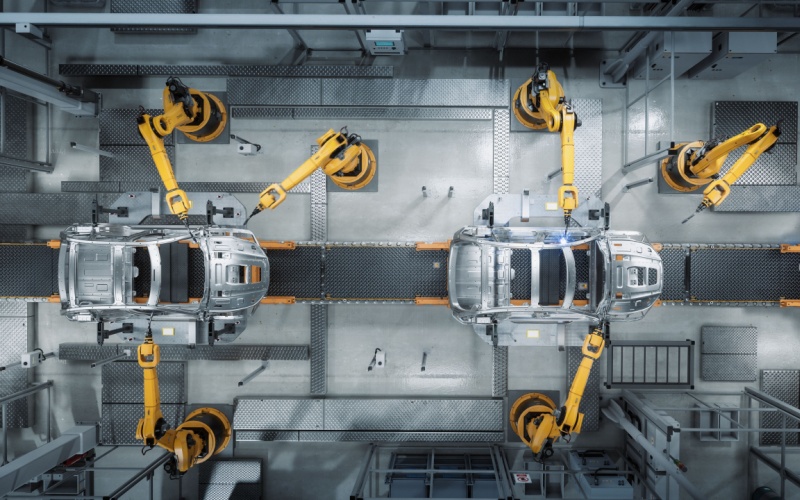Can Production Be Both Flexible and Stable? The Answer Is “Yes!”
The global automative industry has experienced many foundational changes over the past several decades. One of the biggest is a shift from an emphasis on “lean” manufacturing principles — which emphasize production efficiency, stability and profitability — to today’s increasing focus on flexibility and customer-centricity.
There’s no question that operational flexibility is the new competitive imperative for car and truck manufacturers, for a number of reasons.
Worldwide, consumers are embracing electric vehicles (EVs) more slowly than expected, while remaining loyal to internal combustion engines. This is creating complex capacity issues, including production slowdowns at some plants, coupled with a high volume of orders at other plants. In addition, automakers increasingly need to produce more personalized products to meet growing customer expectations. And, while the global chip shortage is clearly in the rearview mirror, manufacturers are still experiencing material shortages and other supply chain disruptions.
As they navigate this volatile environment, automotive manufacturers still need to optimize lead times and delivery reliability. And let’s not forget their central mission: Earning a profit.
Enter the concept of operational flexibility. Innovative, dynamic planning solutions, such as those offered by flexis, a part of Blue Yonder, enable automakers to create flexible production plans that are continuously updated in response to real-time data. By supporting flexible production on an immense scale, these solutions enable car and truck makers to increase their productivity and asset utilization, achieve greater operational stability, and improve their ability to personalize products — while still delivering high levels of customer service and demand responsiveness.
At the same time, manufacturers can significantly strengthen their financial position by reducing their capital investments, decreasing their resource costs, optimizing their transportation expenses, and minimizing their IT costs.
But what about auto manufacturers’ traditional focus on lean, predictable operations? Today’s new flexible approach may seem at odds with lean production, which emphasizes stability and efficiency. Read on to see how these solutions enabled one of the world’s leading truck manufacturers to successfully combine both principles — with a rapid and substantial ROI on the technology investment.
Combining Flexibility and Stability: A Real-World Success Story
A leading European automotive manufacturer with annual revenue more than $14 billion was using a process called “pearl chain” to manage its truck production processes. This traditional lean manufacturing principle is aimed at creating a stable order sequence in production planning — with a clear, pre-defined chain of actions involved in producing the end product.
Pearl chain logic maps the production sequence both for complete vehicles — such as trucks, cars and buses — as well as the associated components like chassis, cabins, axles and engines. The challenge is to place the orders in an optimal sequence that balances multiple possible configurations in the orders on the one hand, and numerous constraints within the production processes on the other hand. No deviations are allowed in this perfect chain, and the production team, not the sales team, determines customer order priorities.
While stability and flexibility might seem to be at odds, flexis, a part of Blue Yonder, proved the perfect solution for combining the strict discipline of the pearl chain with the pull-based nature of flexibility and demand centricity.
This world-leading manufacturer of commercial vehicles has utilized flexis Advanced Production Scheduling (APS) to ensure the optimal scheduling and management of all its orders. The truck maker can operate with maximum flexibility in a networked production system that still closely maps both final assembly and component production. As market conditions shift, both component manufacturing and final assembly are planned and re-planned dynamically and synchronously, based on real-time data that’s ingested by the solution’s optimization engines.
The solutions accommodate the pearl chain process by allowing users to create their own rules and constraints to govern production — then it autonomously applies these rules as it makes optimal production decisions. In making order sequencing choices, the solution empowers planners to weigh trade-offs by simulating the results of different production schemes in advance. Planners can make sequencing decisions that optimally balance service, cost, waste, and other outcomes.
The Result? 100% Production Stability and a Rapid ROI
flexis, a part of Blue Yonder, also allows this leading truck manufacturer to constantly measure and improve production stability, a key objective of the pearl chain principle. By flagging and resolving any violations of the predefined production process, the solution has helped the automotive customer achieve nearly 100% production stability. While vehicle production is flexible, customer-centric and responsive to changing conditions, it’s also predictable and efficient.
By helping this auto industry leader achieve the best of both worlds, they have now achieved significant cost savings and improved profitability. The company’s investment in the solution was repaid quickly, and many times over.
To learn more about this case study or other customer results — or to start creating your own success story — reach out to Blue Yonder today.

